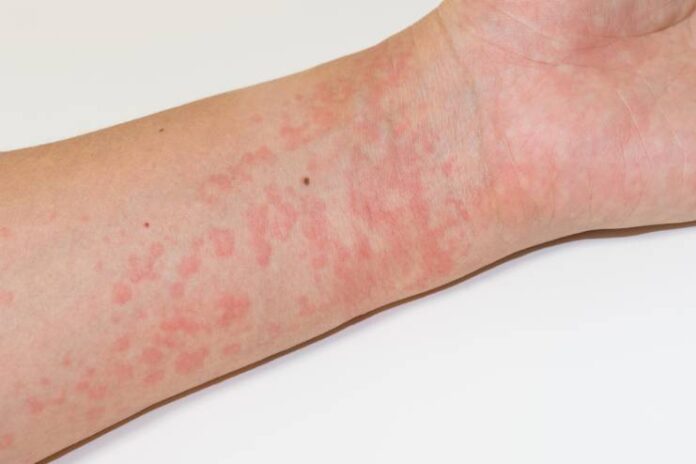Affiliate Disclaimer
Some links in this article are affiliate links. We may earn a small commission if you make a purchase through these links, at no extra cost to you. We only recommend products we find useful to our readersHives in children can be alarming for both the child and their caregivers, often causing discomfort and concern. Hives come in various sizes and may appear on any part of the skin. They are a common condition, especially in children, although they can be present in every age group. These welts may be of any size and shape and often merge to become larger areas of raised and inflamed skin.
In this article, we will review pediatric hives, their causes, common symptoms, and effective treatments so that parents can better manage and alleviate some of the discomfort caused by hives in children.
Understanding Hives in Children

Hives are itchy welts that can suddenly appear on the skin and cause discomfort. They are quite common in children and can appear on any part of the body, including the chest, stomach, and back. The size of the welts may differ; sometimes, they may merge to cover larger areas of inflamed skin. Hives may last anywhere from some hours to several weeks.
Hives can be common in children and are more likely to develop in those with a more reactive immune system. Some common causes of pediatric hives include food allergies, medicines, insect bites, and pollen or pet dander. Hives may also appear because of the presence of infections or changes in temperature, warmth, or other stimulants.
In response to a foreign substance, the immune system usually produces histamines that work on the blood vessels, leading them to dilate. Fluid leaks out to the surrounding tissues, raising patches. Though alarming, this does not usually indicate any serious medical issue.
Understanding pediatric hives involves recognizing their appearance and the probable causes or triggers of this reaction in the body.
Common Causes of Hives in Children
The first step in treating hives in children is to identify the causes, such as some common allergies to food items, medicines, and bites or stings. Moreover, it may be a case of infection or environmental exposure. Stress and other chronic illnesses can also be the cause. With this knowledge, these conditions become manageable for parents and caregivers.
- Allergies

Food: Common food allergens include milk, nuts, eggs, and shellfish.
Medication: Hives can be caused by a child’s reaction to a particular medication, such as antibiotics, pain relievers, or vaccines.
Insect Stings: Bites or stings by some insects like bees, wasps, and mosquitoes are primarily responsible for allergic reactions resulting in hives.
- Infections
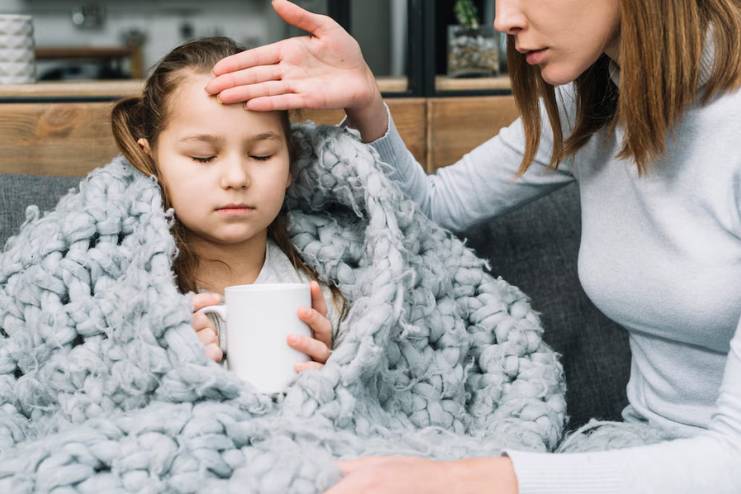
Viral: Hives could be due to viral infections, like the common cold, flu, or COVID-19.
Bacterial: Bacterial infections, such as strep throat, can also lead to hives in some kids.
- Environmental Factors
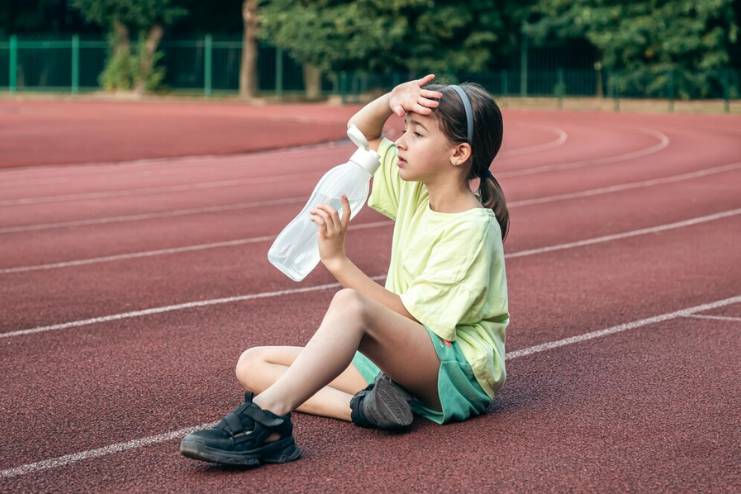
Heat: High temperatures or overheating can lead to heat hives, especially after physical activity or exposure to hot weather.
Cold: Sudden exposure to cold air, water, or objects can trigger cold-induced hives in oversensitive children.
Sun Exposure: Exposure to the sun for an extended period can increase the risk of sun-induced hives, especially in patients with photosensitivity.
- Stress or Anxiety
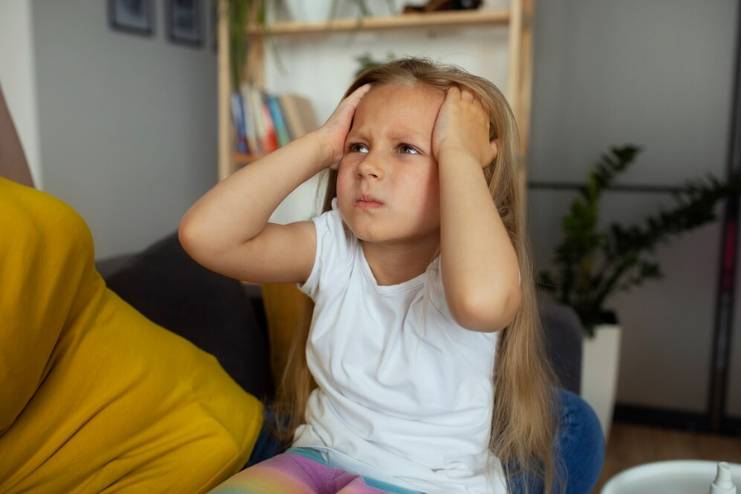
Emotional stress and anxiety sometimes trigger hives in children. If our body releases stress hormones, it might act on the skin and cause hives.
- Chronic Conditions
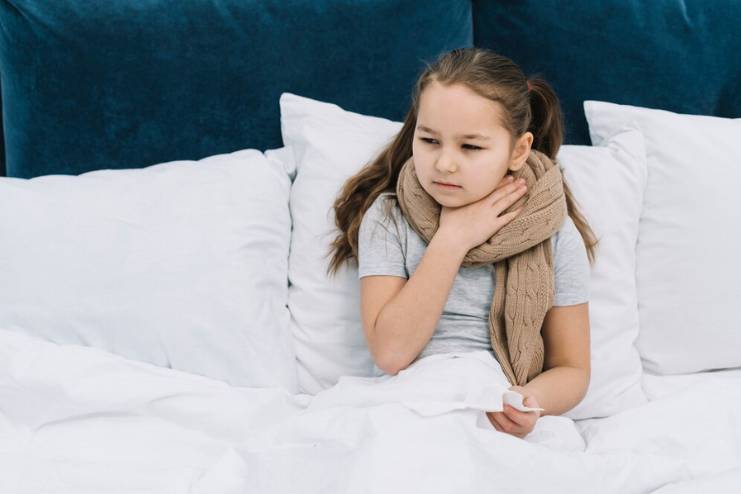
Autoimmune Disorders: Conditions like lupus or thyroid disease can cause chronic hives, in which the body’s immune system attacks the body’s tissues by mistake.
Other Chronic Illnesses: Chronic infections or diseases may lead to persistent hives.
Recognizing Symptoms of Hives in Children
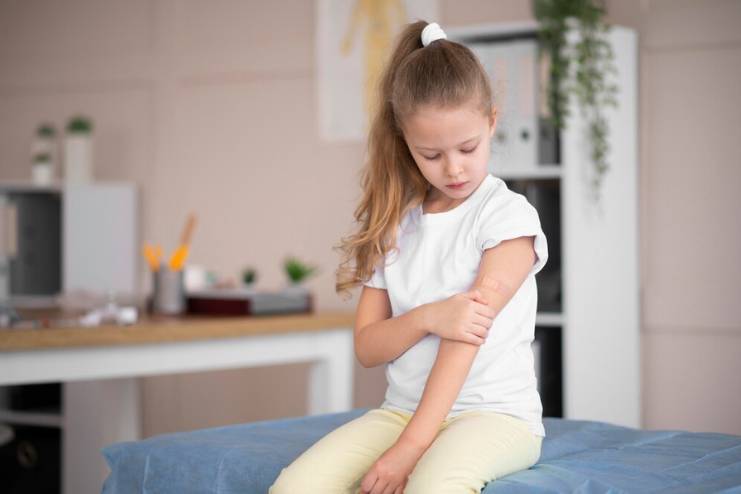
Key symptoms of hives in children include red and raised welts, associated itching, swelling, and rapid appearance and disappearance of these welts. Parents can pick up on this by monitoring skin changes, noting increased scratching behavior, checking the skin for swelling, and timing when this started to appear. Early detection of these symptoms will help in seeking appropriate child’s hives treatment and management of discomfort effectively.
- Red, Raised Welts
Hives are red or skin-colored welts that appear on the skin. They can vary in size from small dots to large patches. These welts may run into one another, forming even larger areas. Hives on darker skin tones have a purple or gray color.
- Itching and Discomfort
The characteristic symptom of hives is itching. The child may constantly scratch or rub, leading to irritation of the welts and resulting in discomfort.
- Swelling
Hives may also cause swelling in various parts of the body, including the hands, feet, face, and lips. This swelling is referred to as angioedema, and it becomes alarming if it occurs on the throat or tongue because it can cause breathing difficulty.
- Rapid Onset and Disappearance
Hives often suddenly appear and may even suddenly disappear. The life of an individual welt may only last a few hours before it fades, but new welts continue to appear. Such rapid cycles of appearance and disappearance can be indicative of hives.
Tips for Parents to Recognize Hives Symptoms
- Monitor Skin Changes: Check regularly for red, raised welts on your child’s skin, especially when they have been lately exposed to potential triggers such as new foods or medications and environmental changes.
- Note Itching Behavior: Observe if your child has been scratching or rubbing their skin more than usual. This is often a sign of itching that results from hives.
- Look for Swelling: Check for abnormal swelling, especially around the face, hands, and feet.
- Observe Timing: Pay attention to when welts develop and for how long they persist. Hives often manifest with rapid onset and resolution.
Safe Treatments for Hives in Children
When treating hives in children, the focus is on alleviating symptoms and ensuring comfort. Here are some effective treatment options:
Over-the-Counter Treatments
- Antihistamines:
- Cetirizine, Loratadine, and Fexofenadine: These antihistamines may reduce itching and swellings. They are generally safe for children aged more than six months, though non-drowsy options are preferable for younger children.
- Diphenhydramine: Effective but may cause drowsiness, making it more suitable for nighttime use.
- Calamine Lotion: Applying calamine lotion can soothe itching and provide a cooling effect on the skin.
Home Remedies

- Cool Compresses: A cool, wet cloth applied to the affected areas can help to reduce itch and swelling. This will give some immediate but temporary alleviation to the sufferer.
- Oatmeal Baths: Add some colloidal oatmeal to a lukewarm bath and soak in it to help your skin soothe the itchiness. Oatmeal is known for its anti-inflammatory properties that soothe inflamed skin.
- Loose Cotton Clothing: Dress your child in loose, breathable cotton clothing to avoid overheating. This is important in reducing irritation to the skin.
Preventing Hives in Children

Preventing hives in children involves avoiding known triggers, managing allergies, and frequent medical check-ups. By implementing these measures, parents can reduce the risk of hive outbreaks in children and relieve discomfort. Here are some ways to minimize the chances of a hive outbreak:
Avoiding Known Triggers
- Allergens:
- Identify and avoid common allergens that may trigger hives, such as some foods like milk, nuts, or shellfish, drugs, insect bites, and animal dander.
- Keep the child away from very high or low temperatures and high humidity.
- Environmental Factors:
- Keep your child away from extreme temperatures and high humidity.
- Ensure they wear loose, comfortable clothing to avoid irritation from tight fabrics.
- Stress Management: Help your child manage stress through relaxation techniques, such as deep breathing exercises, meditation, or engaging in calming activities.
Tips for Allergy Management

- Allergy Shots: Consider immunotherapy or allergy shots if your kid’s case of allergy is severe. Gradual desensitization from these shots can lower the risk of getting hives.
- Diet and Lifestyle:
- Follow a healthy diet and avoid foods that are known to cause allergic reactions.
- Keep your house clean and free from dust, mold, and pet dander.
- Emergency Planning: Be prepared to act in case of an allergic reaction with antihistamines on hand and an epinephrine auto-injector if prescribed by your doctor.
Importance of Regular Medical Check-Ups
Regular visits to the pediatrician can help monitor your child’s health and manage allergies effectively. Early detection of potential triggers and timely interventions can prevent hive outbreaks.
When to Seek Medical Help
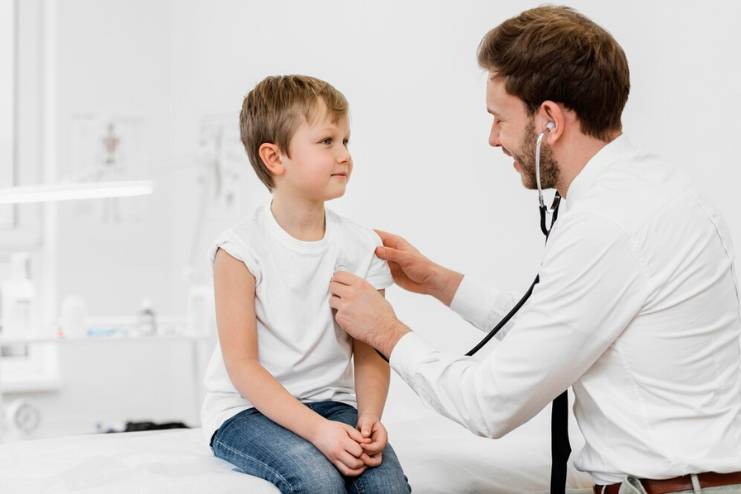
Recognizing when to seek medical advice for hives in children is crucial to ensure their safety and well-being. Effective and safe treatments of hives in children include over-the-counter medicines and home remedies. In severe or chronic cases, get medical help and use prescription medicines. In cases of anaphylaxis, one should seek immediate help from a doctor. Trigger identification and treatment will help a parent deal with hives better.
Indicators for Seeking Medical Advice
Here are key indicators for when to consult a healthcare provider:
- Difficulty Breathing: If your child experiences trouble breathing or wheezing, it could indicate a severe allergic reaction that requires immediate medical attention.
- Swelling of the Face or Throat: Swelling around the face, lips, or throat can be a sign of anaphylaxis, a life-threatening condition.
- Severe Reactions: If a child has difficulty breathing, has a swollen tongue or throat, is feeling dizzy, or even faints, rush the child to the hospital.
- Persistent or Recurrent Hives: If hives persist for more than six weeks or if they show a recurrent pattern, seek help from a qualified health professional for evaluation and further treatment.
- Symptoms Post Medication or Food Intake: If hives appear after taking a prescription or over-the-counter medication or after eating high-risk foods such as nuts, fish, shellfish, or eggs, contact your doctor promptly.
Role of Specialists

- Allergists: They specialize in diagnosing and managing allergies. They can help identify specific allergens and recommend appropriate treatments, such as allergy shots.
- Pediatricians: They can provide general medical care, diagnose conditions, and offer treatment options for hives. They can also refer you to specialists if needed.
Importance of Professional Guidance
- Accurate Diagnosis: A healthcare provider can accurately diagnose the cause of hives and determine if there is an underlying condition that needs to be addressed.
- Proper Treatment: Doctors can prescribe better medications, such as prescription antihistamines or corticosteroids if over-the-counter options are ineffective. In severe cases, they may administer epinephrine.
- Preventive Measures: Doctors can advise on avoiding triggers and managing allergies to prevent future outbreaks.
Medications Prescribed by Doctors

- Prescription Antihistamines: When over-the-counter ones are not strong enough, prescription antihistamines may be required.
- Steroids: In severe cases, it may be necessary to have a short course of corticosteroids, such as prednisone, to reduce inflammation and thereby give some relief.
- Epinephrine: In cases of severe allergic reactions leading to hives, an epinephrine injection may be required to halt the reaction and prevent complications.
Conclusion
Understanding and managing hives in children involves understanding the common causes and finding the triggers specific to them, identifying key symptoms, and knowing when to seek medical advice.
Allergies, infections, environmental factors, stress, and chronic conditions can trigger hives. Symptoms such as red, raised welts, itching, and swelling should prompt parents to take immediate action. Safe treatment options include over-the-counter antihistamines, cool compresses, and calamine lotion. In severe cases, prescription medications may be required. Preventive measures, such as avoiding known triggers and regular medical check-ups, are essential for managing hives.
Identifying the underlying causes and seeking appropriate treatment not only provides relief for your child but also prevents future outbreaks. By being proactive and vigilant, parents can ensure their child’s comfort and health, effectively managing pediatric hives and minimizing their impact on daily life.
In this Article















